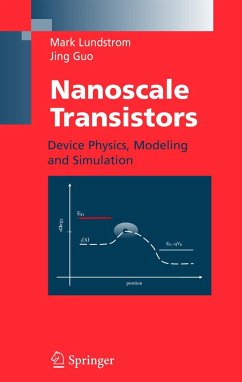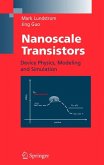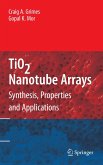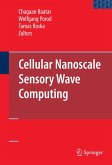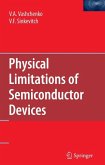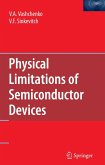The continuous scaling of transistors in the last half of century has been the driving force for electronics. The channel length of the transistors in production today is below 100nm. A wide variety of devices are also being explored to complement or even replace silicon transistors at molecular scales. Similarities between nanoscale and micronscale transistors exist, but nanotransistors also behave in drastically different ways. For example, ballistic transport and quantum effects become much more important. To push MOSFETs to their scaling limits and to explore devices that may complement or even replace them at molecular scale, a clear understanding of device physics at nanometer scale is necessary.
The book provides a description of the recent development of theory, modeling, and simulation of nanotransistors for engineers and scientists working on nanoscale devices. Simple physical pictures and semi-analytical models, which were validated by detailed numerical simulations, are provided for both evolutionary and revolutionary nanotransistors.
Silicon technology continues to progress, but device scaling is rapidly taking the metal oxide semiconductor field-effect transistor (MOSFET) to its limit. When MOS technology was developed in the 1960's, channel lengths were about 10 micrometers, but researchers are now building transistors with channel lengths of less than 10 nanometers. New kinds of transistors and other devices are also being explored. Nanoscale MOSFET engineering continues, however, to be dominated by concepts and approaches originally developed to treat microscale devices. To push MOSFETs to their limits and to explore devices that may complement or even supplant them, a clear understanding of device physics at the nano/molecular scale will be essential. Our objective is to provide engineers and scientists with that understandin- not only of nano-devices, but also of the considerations that ultimately determine system performance. It is likely that nanoelectronics will involve much more than making smaller and different transistors, but nanoscale transistors provides a specific, clear context in which to address some broad issues and is, therefore, our focus in this monograph.
The book provides a description of the recent development of theory, modeling, and simulation of nanotransistors for engineers and scientists working on nanoscale devices. Simple physical pictures and semi-analytical models, which were validated by detailed numerical simulations, are provided for both evolutionary and revolutionary nanotransistors.
Silicon technology continues to progress, but device scaling is rapidly taking the metal oxide semiconductor field-effect transistor (MOSFET) to its limit. When MOS technology was developed in the 1960's, channel lengths were about 10 micrometers, but researchers are now building transistors with channel lengths of less than 10 nanometers. New kinds of transistors and other devices are also being explored. Nanoscale MOSFET engineering continues, however, to be dominated by concepts and approaches originally developed to treat microscale devices. To push MOSFETs to their limits and to explore devices that may complement or even supplant them, a clear understanding of device physics at the nano/molecular scale will be essential. Our objective is to provide engineers and scientists with that understandin- not only of nano-devices, but also of the considerations that ultimately determine system performance. It is likely that nanoelectronics will involve much more than making smaller and different transistors, but nanoscale transistors provides a specific, clear context in which to address some broad issues and is, therefore, our focus in this monograph.

